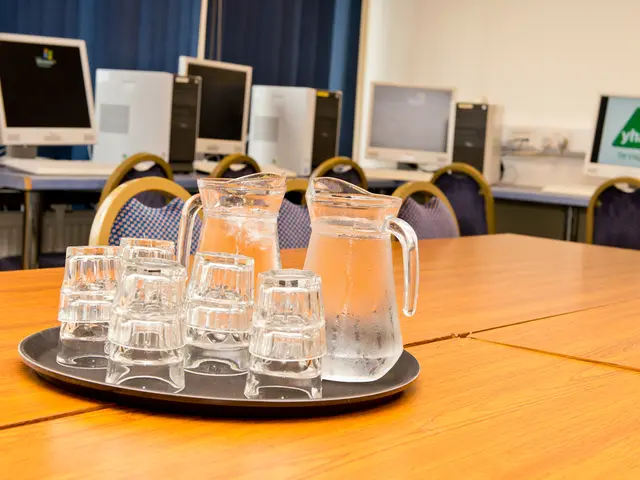Reinventing Physical Activities: The Advent of Gamified Fitness Through AR and VR Apps
Augmented and virtual reality technologies are revolutionizing the fitness industry, making workouts more enjoyable while boosting fitness establishments' profits. With rapid advancements, these technologies are becoming increasingly common in gyms and fitness clubs across the globe.
The digital content integrated into a person's physical environment by augmented reality (AR) offers a new level of interest, attracting consumers and expanding businesses' customer base. Leading examples of AR technology include popular apps like Snapchat and Instagram filters. In the fitness sector, AR apps have gained significant attention. According to GrandView Research, the AR industry reached nearly $18 billion in 2020 and is expected to grow at a compound annual growth rate (CAGR) of 43.8% from 2021 to 2028.
Virtual Reality (VR), on the other hand, is valued for its immersive experience, enabling users to cycle or run in various parts of the world through simple VR headsets. The accompanying sounds and visuals provide an authentic experience that often surpasses real-life counterparts.
VR-based fitness apps combat the monotony frequently associated with exercise, making workouts more engaging. An American startup introduced Black Box VR, a unique virtual reality fitness app that allows users to engage in fitness activities while playing online games, enhancing the entertainment factor of a workout.
predicted that the augmented and virtual reality market size is set to rise from $30.7 billion in 2021 to $296.9 billion in 2024. As users flock to these innovative fitness solutions, popular both during and after the pandemic, AR and VR apps are becoming integral tools for maintaining a fitness regimen.
There are several ways AR and VR technologies are transforming traditional exercise routines, highlighted below:
- Offering new workout opportunities: AR/VR app development services create virtual competitions and social sharing features to enhance competitive spirits and make workouts more enjoyable.
- Maintaining motivation: By incorporating gamification elements, AR/VR fitness apps help users stay engaged and motivated during their fitness journey.
- Establishing achievable goals: AR/VR workout apps can suggest tailored exercise routines based on age, body weight, and other factors, making it easier to accomplish fitness goals.
- Scheduling flexibility: Unlike traditional gym workouts, AR/VR fitness apps can be utilized according to individual schedules, offering greater convenience.
- Enhancing entertainment: By merging games and exercise, AR/VR workout apps make physical activity an exciting and entertaining experience.
- Monitoring health: By keeping track of users' vitals and offering tailored workout recommendations, AR/VR apps provide valuable insights to help users maintain their health.
- Offering virtual destinations: With realistic ambiances, AR/VR workout sessions provide an immersive, interactive experience that makes exercise an adventure.
From offering new workout opportunities to keeping track of users' health, AR and VR technologies are set to significantly transform the traditional fitness landscape. The combined AR/VR market is expected to grow at a CAGR of 18.0% from 2021 to 2028, making these technologies an exciting and promising addition to the fitness industry.
- The integration of augmented reality (AR) and virtual reality (VR) technologies in health-and-wellness, fitness-and-exercise, and technology products presents new opportunities to revitalize workout routines, as evidenced by the growing popularity of AR/VR fitness apps that offer gamification elements and tailored workout recommendations.
- With advancements in gadgets like VR headsets and AR smartphone applications, the intertwining of science and fitness through AR and VR technologies is revolutionizing the health-and-wellness sector, providing immersive exercise experiences, tracking health metrics, and enhancing entertainment value, all contributing to the anticipated growth of the AR/VR market in the science and health-and-wellness industries.




